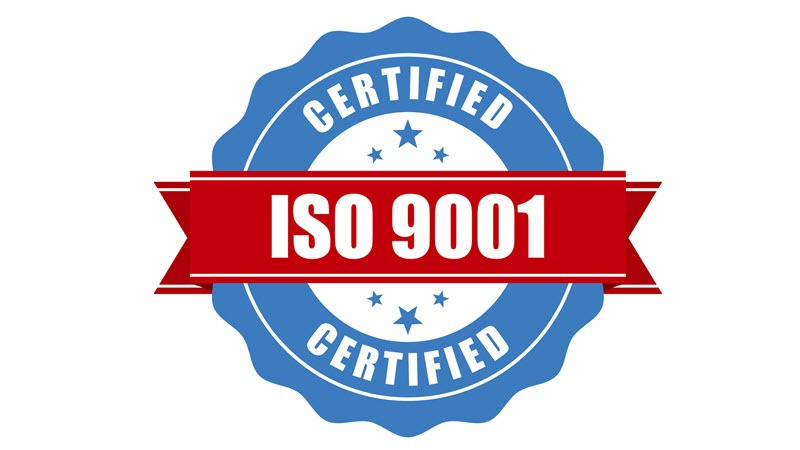
ISO 9001: 2015 (QMS)
ISO 9001: Enhancing Quality and Efficiency in the Modern Business Landscape
Introduction
In today's rapidly evolving and competitive business landscape, organizations across industries are constantly seeking ways to enhance their operations, improve customer satisfaction, and maintain a competitive edge. ISO 9001, a globally recognized standard for quality management systems (QMS), serves as a powerful tool for achieving these goals. In this blog post, we will delve into the essence of ISO 9001, its benefits, and how it can transform businesses of all sizes.
Understanding ISO 9001
ISO 9001 is an international standard developed by the International Organization for Standardization (ISO) that sets the criteria for implementing an effective quality management system. This QMS framework helps organizations establish processes, monitor performance, and continually improve their operations to meet customer expectations and regulatory requirements.
The Core Principles of ISO 9001
-
ISO 9001 is based on a set of fundamental principles that guide organizations toward achieving excellence in quality management. These principles include:
-
Customer Focus: Placing customers at the heart of the organization's operations and striving to exceed their expectations.
-
Leadership: Establishing a clear vision, fostering a culture of quality, and empowering employees at all levels to contribute to the QMS.
-
Engagement of People: Recognizing the importance of employees' skills, expertise, and engagement in achieving quality objectives.
-
Process Approach: Adopting a systematic approach to identify, analyze, and improve processes throughout the organization.
-
Improvement: Continually seeking opportunities for improvement, be it through corrective actions, innovation, or learning from past experiences.
-
Evidence-Based Decision Making: Making informed decisions based on accurate and reliable data analysis and evaluation.
-
Relationship Management: Establishing mutually beneficial relationships with suppliers, partners, and stakeholders to enhance overall performance.
Benefits of ISO 9001
Implementing ISO 9001 can yield numerous benefits for organizations, including:
Enhanced Customer Satisfaction: By focusing on meeting customer requirements and consistently delivering quality products and services, organizations can enhance customer satisfaction and loyalty.
Improved Efficiency and Effectiveness: ISO 9001 helps organizations streamline processes, eliminate waste, and identify areas for improvement, leading to increased operational efficiency and effectiveness.
Stronger Risk Management: ISO 9001 encourages organizations to identify and manage risks effectively, reducing the likelihood of errors, defects, and operational disruptions.
Competitive Advantage: Achieving ISO 9001 certification demonstrates an organization's commitment to quality, which can give them a competitive edge in the marketplace, attracting new customers and business opportunities.
Employee Engagement and Empowerment: Implementing ISO 9001 fosters a culture of quality, empowers employees to take ownership of their work, and encourages their active participation in continuous improvement initiatives.
Regulatory Compliance: ISO 9001 helps organizations ensure compliance with relevant laws, regulations, and industry standards, minimizing the risk of legal or regulatory issues.
Implementing ISO 9001
While implementing ISO 9001 may seem like a daunting task, organizations can follow a systematic approach to ensure a successful implementation:
Management Commitment: Top management must demonstrate their commitment to ISO 9001 and allocate necessary resources for implementation.
Gap Analysis: Conduct a thorough assessment of the organization's existing processes, identify gaps, and develop an action plan to address them.
Documentation: Develop a comprehensive quality manual, procedures, work instructions, and documentation to define and standardize processes.
Training and Awareness: Provide training and awareness programs to employees at all levels to ensure they understand their roles and responsibilities within the QMS.
Implementation and Monitoring: Implement the defined processes, monitor performance, and measure key quality indicators to identify areas for improvement.
Internal Audits: Conduct regular internal audits to assess the effectiveness of the QMS and identify non-conformities or areas requiring corrective actions.
Certification: Engage a certification body to conduct an external audit and assess the organization's compliance with ISO 9001 requirements.
Conclusion
ISO 9001 offers organizations a comprehensive framework to establish and maintain a robust quality management system. By adhering to its principles, organisations can enhance customer satisfaction, improve operational efficiency, and gain a competitive advantage. Embracing ISO 9001 demonstrates an organization's commitment to quality and continuous improvement, positioning it as a trusted and reliable partner in the eyes of customers, suppliers, and stakeholders. In today's quality-conscious marketplace, ISO 9001 is a valuable asset for organizations striving for excellence and sustained success.
